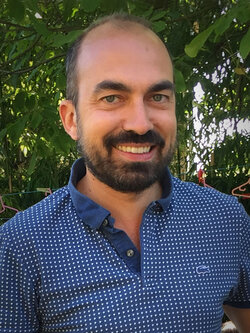Julien Poupard, AFC, discusses his choices for Louis Garrel’s "La Croisade"
Abel and Marianne discover that their son, Joseph, aged 13, has secretly sold off their most precious belongings. They quickly come to understand that Joseph didn’t act alone : there are hundreds of children across the world who have joined forces to finance a mysterious project. They have taken it upon themselves to save the planet.
When I met Louis for the first time at a café, I felt like we’d already known each other for a long time. We spoke the same language. He told me about a film he wanted to shoot quickly, as though it were an emergency.
La Croisade is a short film. It meant a lot to Louis, and it’s almost like a short story, or a tale.
The camera’s viewpoint is that of an adult who has no idea what is going on with the children. Dziga Vertov theorized the directing in the following terms : there is one camera that knows what is going to happen, and another that doesn’t.
Louis would say to me : "You don’t know what’s about to happen. You’re going to film it like a reporter who is discovering what he is filming as he is filming it." Everything is filmed in the present moment.
A quick shoot, it was urgent to tell this story, and what a prediction… The scene with the pollution warning, where a character discusses FFP2 masks, was shot before lockdown…
Louis had shot all his films in 35 mm, and he remains very attached to celluloid. But, because of the budget and because of the urgency, we knew that we’d shoot this one in digital.
I did camera tests on location.
The first test was with the Alexa Mini and the Kodak Portra 400.
Florine Bel, a color scientist, then created an emulation for the digital camera on the basis of the photos shot with the Kodak Portra 400. But her research was empirical. We did a first trial with Florine and Richard. I remember that the colors (cold greens, saturation of lowlights…) were interesting ; but the skin tone was much too warm. So, we scheduled another session for the same images with Florine’s new settings. The problem of the skin had been fixed. But, at times, Laëtitia’s hair was going red, and we corrected that problem, too. At that point, I really felt like I was sculpting a color cube, first mistreating it, squashing it, and then progressively polishing it to give it the correct shape.
We showed Louis the trials, he was delighted with them, and we never spoke about celluloid again…
I also tested out lenses.
Anamorphic ones (Todd-AO / Master Prime Anamorphic / Atlas Orion).
And spherical ones (Zeiss GO / Canon K35 / Leitz Summilux / Angénieux Optimo 28-76mm zooms).
A big “thank you” to Samuel Renollet at RVZ for being so involved with these tests.
We were still hesitating about the 2.35 aspect ratio.
In the end, we opted for the 1.66.
The Kanon K35 series won out. They were light, compact and very bright.
We did a second series of tests.
First, at RVZ to test the distortion of each lens on the faces.
Then in the apartment location with lighting.
During preproduction, we discussed Peter Lindbergh (dark background, natural lighting, contrast) ; Melancholia, for its audacity and lyrical arias ; De battre mon cœur s’est arrêté for its visible camera which decides to film or not film a given thing.
For the forest scenes, we opted for a stylistic rupture. We wanted to find something grandiose, dreamlike, and almost unreal. As though the adults couldn’t believe the childrens’ project was real. The map was designed by set designer Mila Preli. We had many discussions on how to bring lighting and color into it. We wanted to break with the realism of the Parisian apartment, and we used a drone. I like that the film goes in a different direction once the adults discover the map. A drone, lyrical music, glimmering lights…
For the shoot of the map in the forest, we did a prelight with the set design crew a week before shooting. My biggest worry was whether the map would give off enough light to light the actors.

At first, I wanted to use a helium balloon with HMIs to light the far background of the forest. Louis asked to see what it would look like with only the facing lights and the map lit. We conceded that it was much more interesting that way. The powerful facing lights (1,000 lumens) were more than sufficient. I brought the Alexa Mini to 1,600ISO.
For the last part, which we shot later, in Morocco, Augustin Barbaroux filled in for me because I was working on another film. The shots taken during lockdown in a deserted Paris were shot by JR with an iPhone.
I like the way the film tends towards a dream, a utopia. I think it’s a film that is full of optimism.
More secretly, I hope it will touch the generation aged 15-20, and that they feel that the film speaks to them about their reality, their time, and their worries.
Interview by François Reumont translated by A. Baron-Raiffe, for the AFC.
 En
En Fr
Fr






